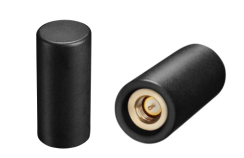- Home
- Symmetry Blog
- Choosing a GNSS Antenna - 5 Questions to Ask | Symmetry Blog
Choosing a GNSS Antenna - 5 Questions to Ask | Symmetry Blog
About Symmetry Electronics
Established in 1998, Symmetry Electronics, a Division of Braemac, is a global distributor of electronic components and systems. Combining premier components and comprehensive value-added services with an expert in-house engineering team, Symmetry supports engineers in the design, development, and deployment of a broad range of connected technologies.
Exponential Technology Group Member
Acquired by Berkshire Hathaway company TTI, Inc. in 2017, Symmetry Electronics is a proud Exponential Technology Group (XTG) member. A collection of specialty semiconductor distributors and engineering design firms, XTG stands alongside industry leaders TTI Inc., Mouser Electronics, and Sager Electronics. Together, we provide a united global supply chain solution with the shared mission of simplifying engineering, offering affordable technologies, and assisting engineers in accelerating time to market. For more information about XTG, visit www.xponentialgroup.com.

It is difficult enough looking for the right GNSS antenna or module. There are many options to choose from, and getting the most popular GNSS option may not be the best choice for your application. [Read our article on "GPS vs GNSS"] Yet as the number of GNSS systems increases and navigation technology improves, keeping track of GNSS choices can be challenging.
Augustine Nguyen, Applications Engineer at Symmetry Electronics, provides a few considerations for those adding GNSS to their design.
Here are 5 questions that OEMs need to consider before choosing a GNSS antenna or module:
1. What Region or Regions Need To Be Supported?
It may be easy to account for GPS, but how about BeiDou or Galileo? Different regions use different GNSS systems, and if your product has a regional focus, it’s best to know the corresponding GNSS system to build around.
“This is an important factor to consider when designing a product because adding support for multiple GNSS systems requires additional testing during the production process,” says Augustine Nguyen. “Each GNSS system serves a specific set of regions with their own regulations, and certification is required before the product can be introduced to a region. This can be a lengthy and expensive process – which any project manager would need to consider.”
GNSS systems available or planned to be available in the future are GPS (USA), Galileo (European Union), BeiDou (China), GLONASS (Russia), NAVIC (India), and QZSS (Japan).
2. Will your project’s GNSS antenna support a single GNSS system or multiple GNSS systems?
The answer depends on the global reach of the application. Is the product a domestic product, with a strong focus on a specific region, or will the product extend across other parts of the world?
“Do you want your product to provide GNSS capabilities for multiple regions around the world? You are essentially dictating the demographic you are selling to. It comes down to how flexible and versatile you want your product to be. For example, your cell phone should have location tracking no matter where you are in the world, therefore supporting multiple GNSS systems. An application focusing primarily on domestic farmers, on the other hand, would only need to support the GNSS system that pertains to that specific region. Supporting only the regions you need keeps the product cheaper and easier to produce.”
3. What will the size of the product be?
Take into consideration the dimensions of the product, as well as the size of the PCB. Augustine explains further:
“Knowing the size of the product is important because the dimension of the product and its PCB determines where you can place the antenna. Poor placement of the antenna would affect the antenna’s performance. The size of the antenna also changes how the antenna behaves. The antenna’s output power, efficiency, and directivity are the major parameters that can be affected by poor design.”
4. Where should the antenna be located?
Internal, or external? Soldered or connected via cable? Location determines the optimal performance of the system and the user experience.
"The location of the antenna on your product’s PCB affects the radiation pattern and efficiency of it. Depending on the type of antenna, the size of the PCB’s ground plane should always be considered in comparison to the antenna manufacturer’s reference plane and calculated values. The manufacturer’s data sheet of that particular antenna only gives you the general idea of how it performs and will often bear no resemblance to the antenna performance on your final product. This is because antenna manufacturer use reference boards (that are of a specific size) to ONLY provide a baseline of their product’s performance.
The location of the antenna also has to do with how you want your design to look like. You don’t find GNSS antennas external to the enclosure of the phone because it would be unattractive. There is a balancing act between the product’s functionality and its aesthetics.”
5. Where will you be getting your GNSS from?
Not all antennas are the same, and good manufacturers go above and beyond to make sure buyers are satisfied. Choose reputable parts for quality and service. A specialty distributor can help you find the right antenna and avoid costly mistakes along the design cycle.
Conclusion
Finding the right solution for your specific needs is key to successful design. The size of the product, location of the antenna, and geographic range are important factors to consider before adding GNSS to your design.
Recommended Antennas
Ethertronics offers antennas of all sizes to accommodate your product needs.
For smaller antennas mounted on the surface of a PCB, Ethertronics offers internal antennas that are placed inside the enclosure of the product as a surface-mounted device, or SMD.
Ethertronics: 1001011 (SMD) - Prestta Standard GPS Embedded Ceramic Chip Antenna
Ethertronics: M830120 (SMD) - GPS Savvi Ceramic Chip Antenna
Ethertronics: 1002427 (SMD) - Embedded GPS ISM Stamped metal SMT Antenna

Ethertronics 1002857 EtherHelix
Ethertronics also offers bigger, external or off-board antennas connected to the PCB via a coaxial cable with RF connectors at both ends (SMA, u.FL). These external antennas are either placed outside the enclosure of the product or off the products PCB to provide more design flexibility.
Ethertronics: 1002857 - EtherHelix Mission Critical GPS Antenna
Ethertronics: 1004138 - GPS Active Patch Antenna
In addition to industry-leading wireless antennas, Ethertronics has an in-house team of engineers to help analyze your product or system and fine-tune your RF design around your application for optimal performance. Click here to see the selection of Ethertronics antennas available.


